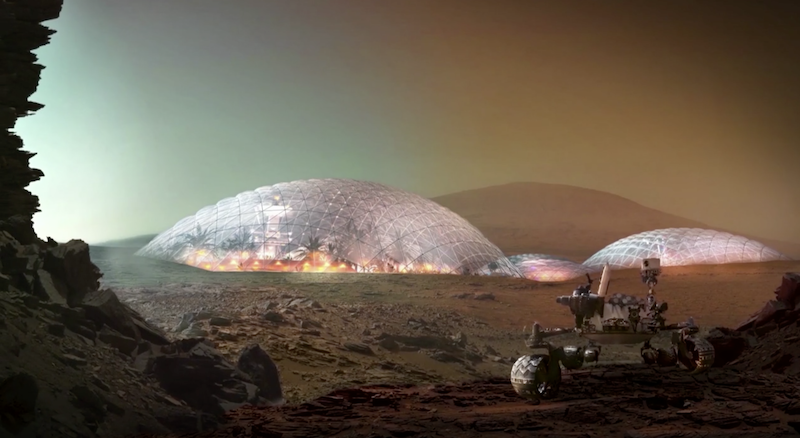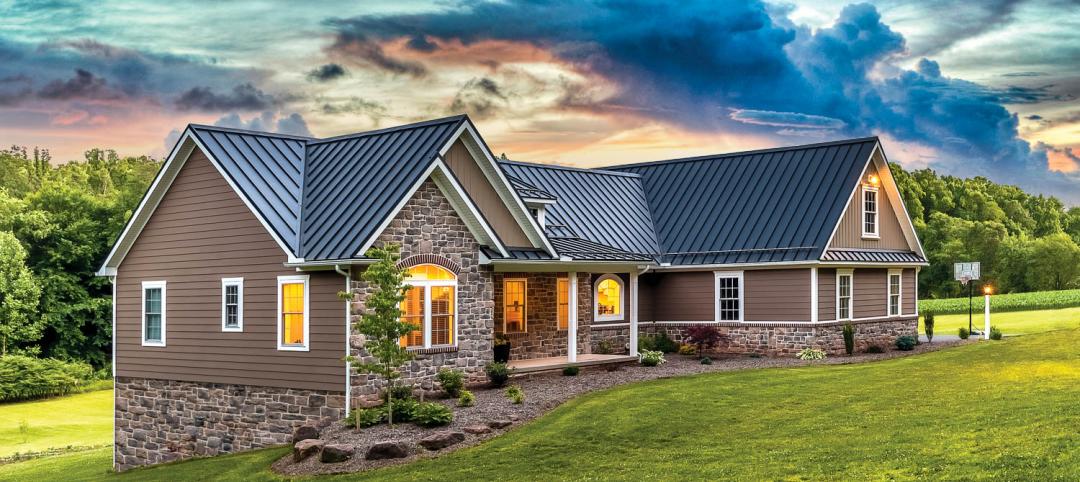Bjarke Ingels has joined the building-on-Mars party. BIG's prototype Martian city, dubbed Mars Science City, is designed to be an environment dedicated to the knowledge, education, and exhibition of the technologies necessary to inhabit mars.
But what's even the point of this discussion? Especially in times like those which we are currently experiencing, isn't the thought of building a city on Mars a bit quixotic? Perhaps, but as Ingels points out, of the 17 sustainable development goals of the United Nations, eight of them deal with the built environment. And when it comes to the built environment on Mars, sustainability is key.
The purpose of designing for Mars can be summed up in one word: innovation. The solutions architects, designers, scientists, researchers and the like come up with for living on Mars can and will help right here on Earth. Space travel has already given us dozens of innovations and inventions that we now use on an everyday basis; scratch-resistant lenses, shock absorbers for buildings, solar cells, and memory foam were all originally created to help solve a very specific problem associated with space travel.
As Ingels says in his talk, "The exact same principles and the exact same systems that will allow us to live on Mars are the very same that will allow us to be great custodians on earth."
See Also: Designing for the final frontier: Space architecture
Watch the entire presentation from Bjarke Ingels below.
Related Stories
Energy | Jul 13, 2022
Electrification of buildings, new and old, furthers environmental responsibility and equity
It’s almost a cliché in our industry, but nonetheless: The greenest building is the one that is already built.
Codes and Standards | Jul 12, 2022
USGBC sets out principles for LEED’s future
The U.S. Green Building Council recently published a report containing principles outlining how LEED will evolve.
Building Team | Jul 12, 2022
10 resource reduction measures for more efficient and sustainable biopharma facilities
Resource reduction measures are solutions that can lead to lifecycle energy and cost savings for a favorable return on investment while simultaneously improving resiliency and promoting health and wellness in your facility.
Building Team | Jul 1, 2022
How to apply WELL for better design outcomes
The International WELL Building Institute (IWBI) cites attracting top talent, increasing productivity, and improving environmental, social or governance (ESG) performance as key outcomes of leveraging tools like their WELL Building Standard to develop healthier environments.
Green | Jun 22, 2022
The business case for passive house multifamily
A trio of Passive House experts talk about the true costs and benefits of passive house design and construction for multifamily projects.
Sustainable Design and Construction | Jun 14, 2022
For its new office, a farm in California considers four sustainable design options, driven by data
The architect used cove.tool’s performance measurement software to make its case.
Building Team | Jun 13, 2022
Partnership rethinks emergency shelters to turn them into sustainable, resilient homes
Holcim and the Norman Foster Foundation have struck a partnership to rethink emergency shelters to turn them into sustainable and resilient homes.
Green Specifications | May 12, 2022
MG2’s Sustainable Materials Evaluation System
Learn how MG2’s Sustainable Materials Evaluation System helps clients, prospects, and staff choose the most environmentally feasible materials for their building projects. Candon Murphy, LEED GA, Assoc. IIDA, Design Lab Manager and Materials & Sustainability Specialist with MG2, speaks with BD+C Executive Editor Rob Cassidy.
Sponsored | BD+C University Course | May 5, 2022
Designing with architectural insulated metal wall panels
Insulated metal wall panels (IMPs) offer a sleek, modern, and lightweight envelope system that is highly customizable. This continuing education course explores the characteristics of insulated metal wall panels, including how they can offer a six-in-one design solution. Discussions also include design options, installation processes, code compliance, sustainability, and available warranties.

















